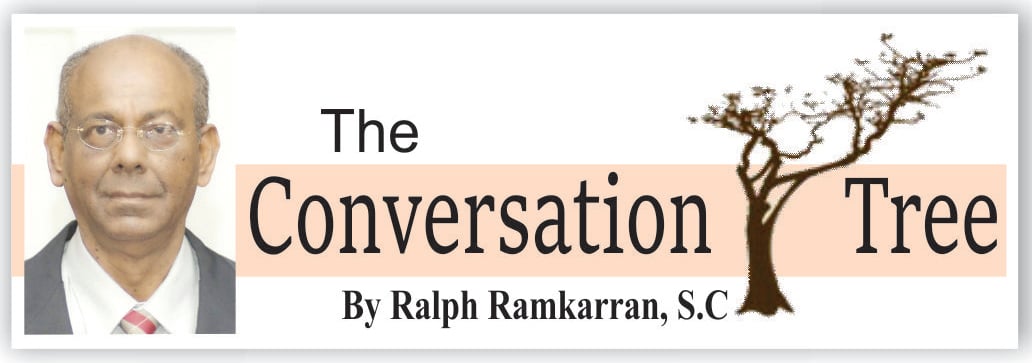The Berbice Slave Rebellion, which began on February 23, 1763, is a seminal event in Guyanese history, commemorated by Guyana’s most famous work of sculpture at the south eastern entrance to the Georgetown city centre. Republic Day and Mashramani celebrations take place in February. The Rebellion’s lessons of the enduring quest for freedom, the display of statesmanship and courageous leadership, have been inculcated as part of the Guyanese consciousness and have shaped our aspirations.
Yet the Rebellion is hardly known outside of Guyana. Hopefully, Marjoleine Kars’s just published book, “Blood on the River: A Chronicle of Mutiny and Freedom on the Wild Coast” will bring the “untold story of the Berbice Slave Rebellion” to a wide audience. Ms. Kars, a noted historian of slavery, is an associate professor at the University of Maryland. A Dutch speaker, she “happened upon a cache of records,” “an extraordinarily rich” archive in the Netherlands about the massive slave rebellion in Berbice about which she, and few others, had ever heard. The book is described as “a masterpiece” and “an astonishing work of history.” One writer concluded that “one of the great slave revolts in modern history has at last found a gifted historian to tell its epic tale.” Ms. Kars deserves Guyana’s gratitude and congratulations for treating this defining event in Guyana’s history with such commitment and frankness, sparing no one, but always on the side of the oppressed.
Berbice was owned by the Company of Berbice, which operated under the sovereignty of the Dutch Republic (Republic of the Seven United Provinces). The Company’s directors in Amsterdam appointed the Governor, who was assisted by a council of local planters who also doubled as the colony’s court. Company and planters together owned 4,200, to 5,000 slaves. The then recently appointed Governor was Wolpert Simon van Hoogenheim, 32, and he was one of 350 Europeans in a colony with about 15 soldiers, ill trained and of modest character. New Amsterdam, a small hamlet around Fort Nassau, 60 miles up the Berbice River, was the administrative centre.
Early in 1763, following a small rebellion the year before, slaves at Magdalenenburg and La Providence in the Canje River, revolted. They were followed by several plantations in Berbice, eventually enveloping the entire river. Among the many killed were masters, mistresses and children as well as recalcitrant slaves. At Peerboom, to which the Europeans escaped, hoping to make a stand, a day of fighting ended with a truce. But as the Europeans tried to leave the rebels broke the truce and slaughtered 20 of the 70.
Meanwhile, alarmed at the events at Peerboom, the Europeans abandoned Fort Nassau and, along with the 100 soldiers sent by Surinam, took up residence at Dageraad which was easier to defend and had more access to supplies. After an inconsequential skirmish, van Hoogenheim received a remarkably statesmanlike letter in the highest traditions of diplomacy, from “Governor” Coffij (Dutch for Kofi or Cuffy), proposing the division of Berbice in two, with the Dutch taking half and the rebels taking half. The letter explained that the cause of the rebellion was the brutality of the “Christians,” referring to the slave owners. Ms. Kars does not spare us the brutality of the era and of the event by the rebels or the “Christians.”
Although nothing is known about their origins or lives or much about their exploits, the familiar names leap from the pages – Coffij, Atta, Accabire, Accabre, and Accara. Some unknown ones are introduced to us, including Fortuin and Gousarie.
Ms. Kars explains African traditions and cultures that were substantially responsible for the decisions taken by the rebels and the course of the rebellion. Coffij’s suicide after a few months ended the exchanges with van Hoogenheim, who, in any event, was playing for time for troops and supplies from the Dutch. But Coffij’s suicide and the sacrifice of several others, including Europeans, to accompany him in the afterlife, probably resulted from the loss of the argument between negotiation and military action. Leaders in certain parts of Africa were expected to commit suicide after the loss of confidence in them by their colleagues. Other divisions could be similarly explained. For example, “creoles,” the derogatory name for those born in Berbice, were less militant than those who came from Africa and that may have been responsible for reluctance to fight and defections towards the end. Slaves on company-owned plantations who were treated less brutally were similarly inclined. African traditions, such as the guerilla warfare deployed after the arrival of Dutch troops, were African experiences.
Much has been made of the rebels’ adoption of the mannerisms and behaviour of the slave owners. The same criticism has been made of the leaders of the Haitian Revolution. But leaders in Africa were given extensive authority and treated with great courtesy and respect. It is this history – influenced of course by the behaviour of slave owners – that motivated the rebels’ behaviour. If Berbice were to be divided and production were to continue by the rebels, this could only have been done by slave labour. It was not unknown in Africa for captives to be enslaved after war.
The rebels failed to take advantage of the weaknesses of the Dutch, such as desperation and the shortages of soldiers, supplies, arms and ammunition. While they had some of the same problems, they were motivated and had achieved much success. The waiting game resulted in the arrival of about 1,000 soldiers and supplies. Due to the help of Amerindians given to the Dutch, growing shortages of food and supplies, arms and ammunition, defections and lack of motivation among the rebels, and constantly being hunted, however incompetently by Dutch troops, their rebellion began to fade and eventually collapsed with the capture of Atta by Accara, who defected.
“Blood on the River” is available for purchase via amazon.com










